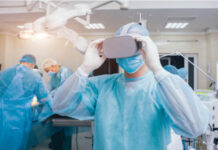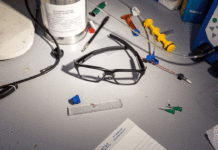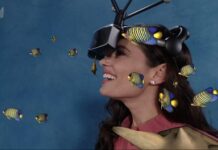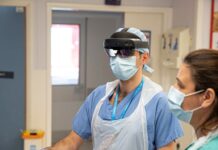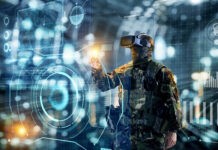
Virtual and augmented reality has taken the world by storm and it seems as if everyone is talking about it. This technology made its way from the entertainment industry and infiltrated almost every sector of the economy. AR and VR are being used in the healthcare, education, and food industry. The Department of Defense is even using it as part of their training simulations. As stated above, everyone is talking about how amazing it is but no one is asking what hazards or dangers come with this type of technology.
AR and VR technology research has been going on since the 1980s but it is only now that consumers are taking it seriously because it is so widely available to the public. Whilst many scientific studies show its advantages over the long run, very few studies have been done about its negative effects. There is also very little oversight regarding VR and AR content and the effect it could have on the future. There could even be ethical dangers involved that businesses and individuals need to take note of when they decide to use VR and AR in the workplace.
Mel Slater, director of Event Lab in Faculty of Psychology of the University of Barcelona (UB), recently participated in a study with a group of researchers and published an informative paper. The paper, featured in the journal Frontiers in Virtual Reality, reflects on the potential ethical dangers that virtual and augmented reality may have during mass spread. According to researchers, several dangers might arise as these technologies become more and more realistic and they call for more research to be done in this field. Other researchers in this study represent major companies such as BBC R&D, Digital Catapult, Dimension /Hammerhead VR, and Facebook London.
Here are some of the key aspects of the study:
Potential negative side effects of virtual and augmented reality remain unexplored
When virtual reality became a researchable topic 40 years ago it was presented in a form we recognize today: a mounted display with head tracking and computer-generated images. Today, experts and consumers know it has evolved into much more than that. When it comes to the high visual and behavioral realism that we are used to today, we do not know enough about it to determine what its long-term negative effects can be.
![]()
It is very possible that virtual elements can soon be indistinguishable from real-life and humans would not be able to tell what is virtual or augmented and what is real. Slater mentions an example of a normal computer game that displays violence but the violence is stuck inside the screen from where it is experienced by the player. In VR, however, the player or the user is part of the scenario. The characters are life-sized and standing right in front of you. Slater further says that so far the technology has only focussed on the good and not on possible implications.
Limits between VR and AR experiences
Researchers set out to explore and reflect on the potential dangers of virtual and augmented reality so that they can further investigate possible worst-case scenarios. The group mainly concentrated on possible problems that might arise due to prolonged exposure to VR and AR, for example, experiences in VR or AR can be perceived as memories that happened in real life. They also highlighted potential problems that the user might experience as they transition from a virtual world to the real world especially when violent activities took place in VR.
Slater explained that the user might find himself in a different world when he takes the headset off after being in an ultraviolent experience. He believes that re-entry into the real world might lead to disturbances of various types, especially after repeated violent exposure. These disturbances might affect the cognitive, emotional, and behavioral aspects of the user’s life. The user might question whether it happened in VR or real life, were the emotions that they perceived as real as it felt, and they might question social behavior in the real world. Another issue that was of concern was social isolation after experiencing VR where the virtual world is more favorable than the real world.
A regime with rules similar to a cinema
Even though researchers highlighted these concerns, they also emphasized that there is not data that can help them in addressing these issues. Besides the potential problems, researchers outlined important questions that should be considered as the long-term effects of XR-use, whether XR can manipulate experiences or even memory, and whether people can distinguish between certain events post-VR. It is important to the researchers that the data is collected and that more research is being done on this.
Slater stated that is imperative that VR and AR content and application creators are aware of the possible dangers. He also says that this must be based on scientific study and factual proof rather than opinions. According to him, there is an urgent appeal for interdisciplinary research to address these issues and any other issues that might arise. The most important to him, however, is that the research could form a basis of a regulatory regime like in a cinema. With this, he means that there should be a clear classification of content by age and other conditions.
After this study, the researchers will be forming a permanent working group and have continuous meetings and discussions as well as raise awareness of any new issues that might need an address. Slater stated that they plan to have a one-day Workshop for Industry where they present these issues in a public forum. Thereafter a more permanent working group will be formed from this to advise certain industries, governments, and international bodies. The goal of the working group is to raise awareness on the need for thorough research on the topic of potential dangers when it comes to AR and VR tech.
27 April 2020

